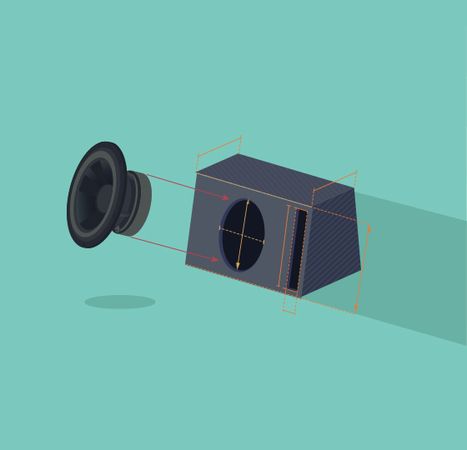Acoustics 101 Speaker design TUTORiAL
P2P | 12 November 2020 | 490 MB
Design an enclosure to match your preferences
The main purpose of this course is to teach you how to properly design an enclosure for your speaker. There is no such thing as “This enclosure is the best choice for this particular speaker”. You have to take into consideration your application and your personal preferences. Do you want it to sound loud? Do you want it to sound deep and don’t care about loudness? You want it to be as smooth and linear as possible? These are all just a few examples of questions that needs answering before you get to work. The final result will always be a compromise between the acoustical qualities of an enclosure. Only you can decide which sound qualities are more important to you and you should be the one who “moves the sliders”.
Acoustics basics
This course assumes that you have minimal knowledge about acoustics, and therefore starts slowly with some basic information about sound waves, how they are created and what are their characteristics. Then moves on to how the speaker is designed and some other relevant information about acoustics. This is obviously needed for a beginner, but it’s also good for an intermediate student, as I’m sure he will also find new information to make matters even more clear.
Enclosure types
Most of the common enclosure types are listed, explaining their working principle, pro’s and cons for each one. But, we will focus our attention for the sealed and bass reflex enclosures. These are covered with extensive details regarding their characteristics and how to design them according to the standard alignments, or to complete custom response curves.
Modeling software
To model the response curve of the enclosure and to calculate the dimensions of the box, two methods will be used. You will receive an excel spreadsheet, that has all that you need to model a sealed or a bass reflex enclosure with minimal difficulty. It even has a chart to show you the modeled frequency response. It’s basically a complete package for a beginner. The other method is by using a paid application. There are a lot of speaker design software solutions out there but I chose : “Subwoofer design toolbox”. The main reasons are : it’s cheap, simple, easy to understand and it has all the basic functions. If you are a beginner it’s very important to start slow, otherwise you will get overwhelmed by complicated applications with extra features that will only confuse you.
Who is the target audience?
•Audiophiles who want to learn more about sound and speaker systems.
•DIY-ers who want to build their own speaker enclosure.
•People who built enclosures by following some speaker plans, but want to understand the design process.
•People interested in acoustics and electro-acoustics
[toggle title=”Home page”]https://bit.ly/2NOQ1LW[/toggle]

http://alfalink.to/6d06ed19284c2bcdd4e61
Please REPORT in Comment Broken Links




